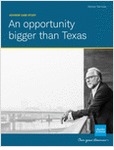While the Setting Every Community Up for Retirement Enhancement (Secure) 2.0 Act of 2022 is now law, some of the regulations mandated in the sweeping reform legislation may take years to come to light — if they ever do.
President Joe Biden signed Secure 2.0 as part of a $1.7 trillion spending bill. The new retirement law includes effective dates that run the gamut from now to the 2030s as well as dates for when agencies are to implement guidance or issue regulations.
Like the Pension Protection Act of 2006, “there is a lot here [in Secure 2.0] to digest,” said Steve Saxon, partner at Groom Law Group. “Given how slow things were moving even before Secure 2.0, it stands to reason that the IRS and DOL will get bogged down in issuing necessary guidance in a timely manner. It will be a very slow process.”
As is the case with the Dodd-Frank Act of 2010 — which has taken more than a decade to implement, with mandates still outstanding — the agencies charged with Secure 2.0 duties may never fulfill them.
Some of the Secure 2.0 provisions “require the arduous and lengthy process of changing or rewriting regulations,” which often “get bogged down with cross-agency turf wars, public comment periods, and K-Street engagement,” notes Jeff Bush of The Washington Update.
In setting a timeline for a regulatory action, “Congress considers the urgency of the matter, how quickly stakeholders will need the guidance, and how long it’s reasonable to assume it will take for guidance to be issued,” adds J. Mark Iwry, head of national retirement policy during the Obama-Biden administration who’s now a nonresident senior fellow at the Brookings Institution in Washington.








 January 11, 2023 at 10:39 AM
January 11, 2023 at 10:39 AM












 Copyright © 2024 ALM Global, LLC. All Rights Reserved.
Copyright © 2024 ALM Global, LLC. All Rights Reserved.